I’ve always been with you
sonic sculpture
2023
2023

Oddkin, I have always been with you
Photo: Oddkin, 2023
Have you ever wondered about your voice not as thoughts or production of your mind and intellect but as a bodily contraction, vibration, resistance, and resonance in your throat (and probably in your pelvis)? When we look at our voice as an embodied activity, anything we voice become influenced by this somatic, material, biophysical condition. Especially nowadays, when so many of us speak without the awareness of the biological, evolutionary, and natural technology that makes it possible to speak, if it’s that vulnerable, maybe the words we pronounce are filled with that vulnerability, that fear and insecurity. Justice is a word that we shout to stop violence, to hold accountable, and scream as a spell to make the oppressors, the perpetrators, listen, withhold, and empathize. “Justice” is not out there; it is in the exhaled breath that turns into a sound through the vibration of the vocal cords that transforms silence into action. Justice begins with the recognition of the body that speaks truth to power.
How do we turn two vibrating strings that can make and unmake worlds into a concern of the Anthropocene? How can we remind people that our bio-physical instrument that makes the human voice possible is as fragile and exposed as our planet? How has the human language fixated on representation and abstraction and forgotten its biological roots in favor of the virtual and metaphysical? How can the focus on the vocal cords be a reminder of the chasm between matter and meaning, body and mind? How do we accept the ethical contradiction between the signified and the signifier? How the wound, the chasm, and the separation between nature and culture can be represented through the exposure of the vocal cord? We have been busy responding to these questions for the last two months with our new work: I have always been with you, a ceramic sonic sculpture pair. The artwork's physicality was a significant conceptual aspect, so we materialized it in space instead of remaining on-screen with CG methods. (This is the first time we sculpted with clay and experimented with glazing. It also made us in contact with the matter that matters and taught us constantly in a bodily manner.)
How do we turn two vibrating strings that can make and unmake worlds into a concern of the Anthropocene? How can we remind people that our bio-physical instrument that makes the human voice possible is as fragile and exposed as our planet? How has the human language fixated on representation and abstraction and forgotten its biological roots in favor of the virtual and metaphysical? How can the focus on the vocal cords be a reminder of the chasm between matter and meaning, body and mind? How do we accept the ethical contradiction between the signified and the signifier? How the wound, the chasm, and the separation between nature and culture can be represented through the exposure of the vocal cord? We have been busy responding to these questions for the last two months with our new work: I have always been with you, a ceramic sonic sculpture pair. The artwork's physicality was a significant conceptual aspect, so we materialized it in space instead of remaining on-screen with CG methods. (This is the first time we sculpted with clay and experimented with glazing. It also made us in contact with the matter that matters and taught us constantly in a bodily manner.)

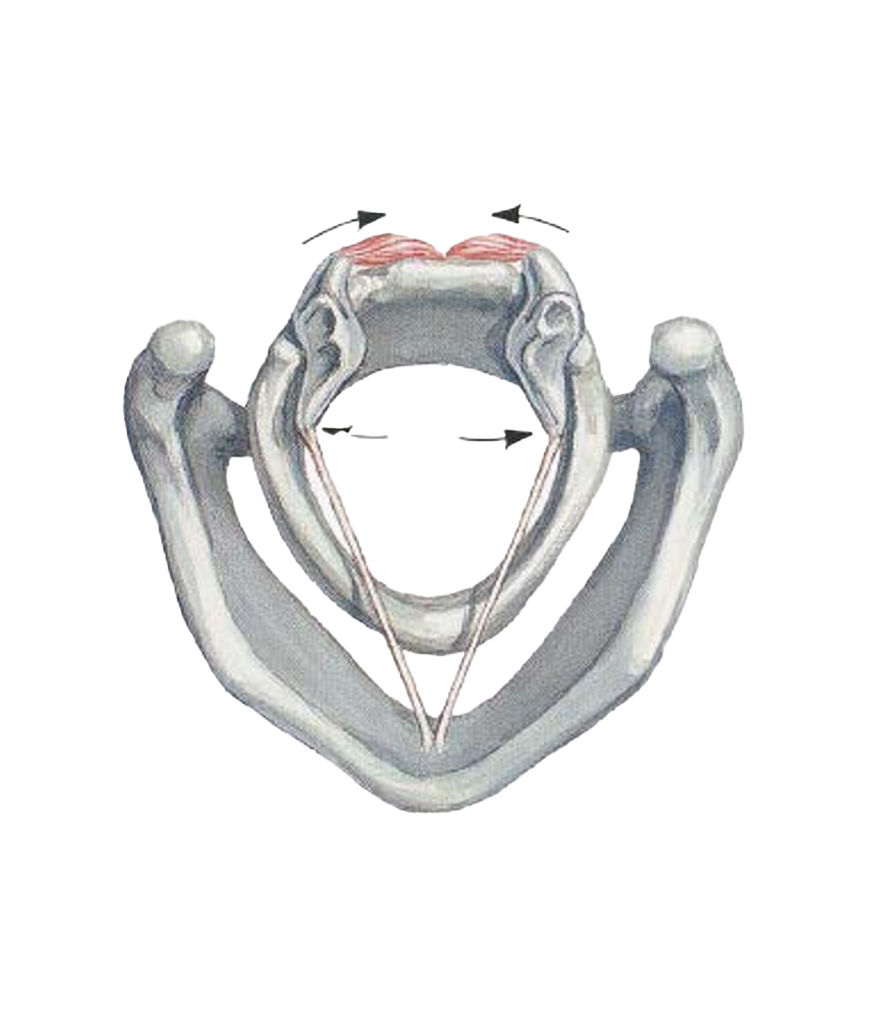
Image 1: a drawing of a human Larynx in top view, that depicts the movement of the vocal cords and its corresponding muscle
Image 2: a photo of a human larynx depicting almost closed vocal ligaments
3D Graphics sketches

close-up 3D render sketch for the sculpting process.
(credit @Oddkin)
Sketching the vocal cord in Blender, we used three different 3D models. I remember downloading and composing the models in a small cafe in Szentendre, northern Hungary, not far from Piliszentlászló, where we stayed during August. In this public space, we realized that the vocal cords, including the whole throat, are closely associated with the vagina, including the whole pelvis. This is not just a coincidental association; Bonnie Bainbridge Cohen says, "The vocal mechanism itself comes from the center of our perineum." (source) The larynx develops in the pelvis, and later, it moves up to the lateral column. This aesthetic and visual similarity between the larynx and the vagina brings up a sexual, intimate dimension that we haven’t considered before. Both parts of the body are active in birthing life. We give birth to worlds and ideas when we speak, but the question is what kind of worlds and ideas grow into.

the whole 3D render sketch for the sculpting process
Process photos
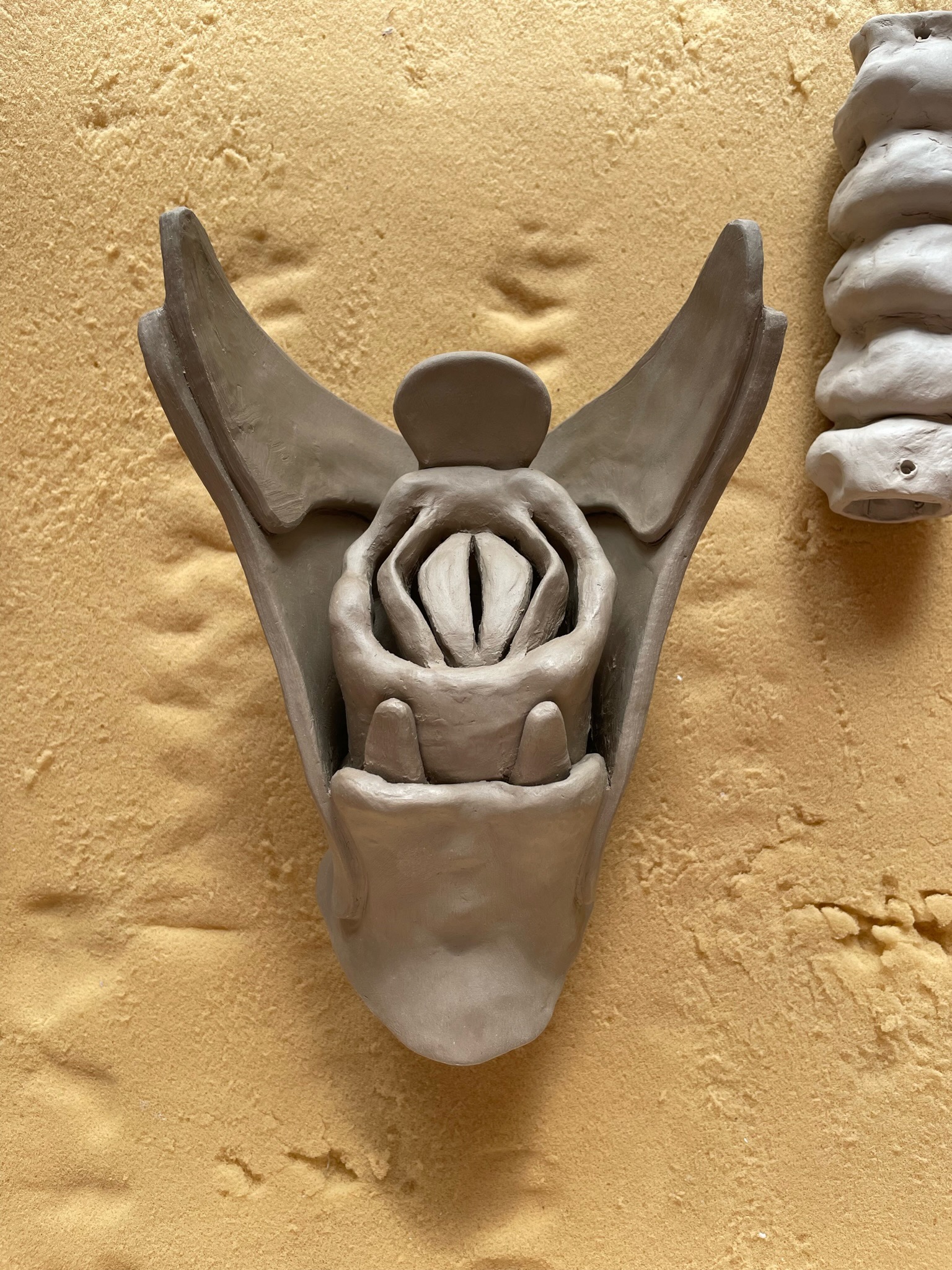

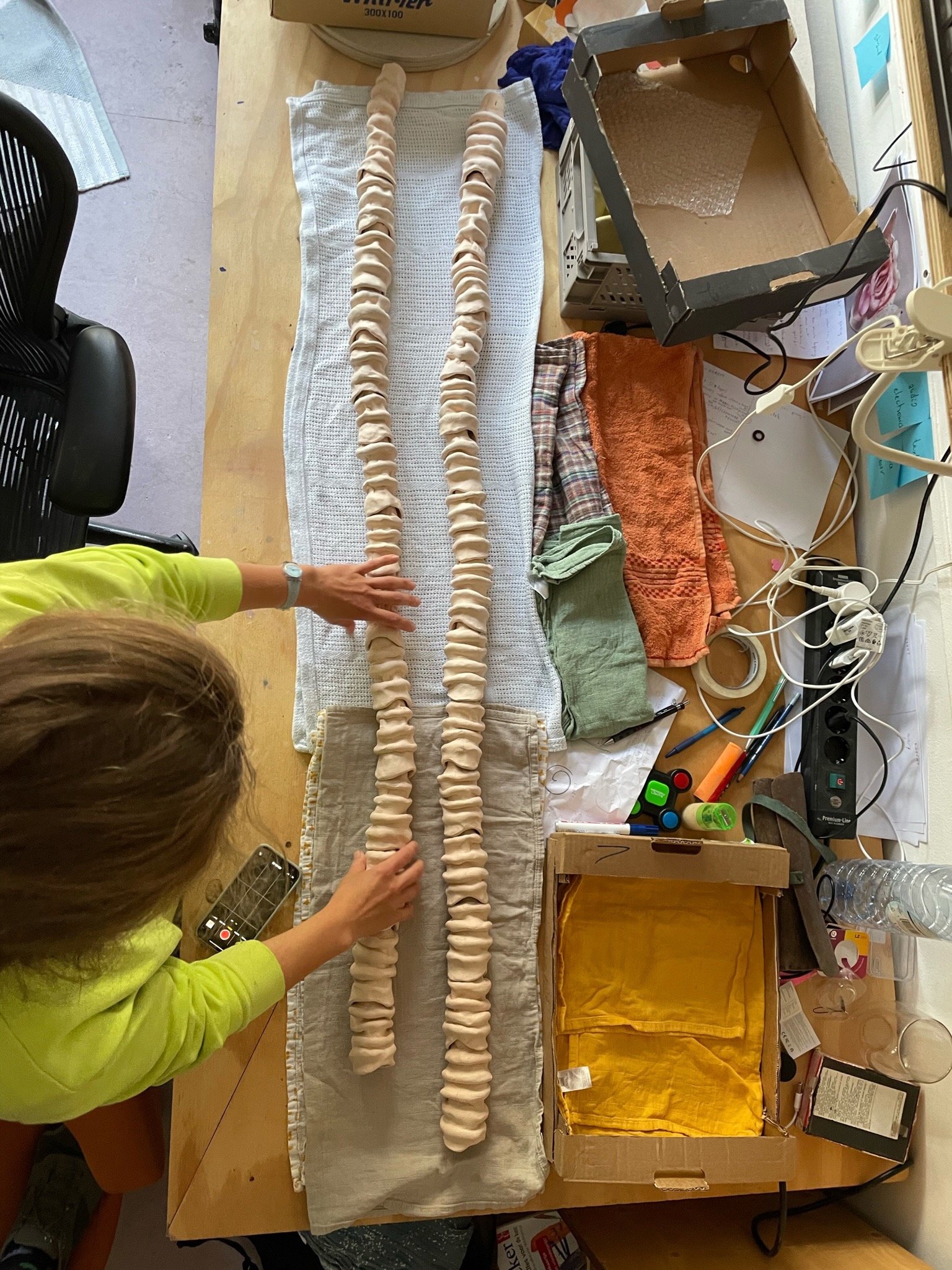
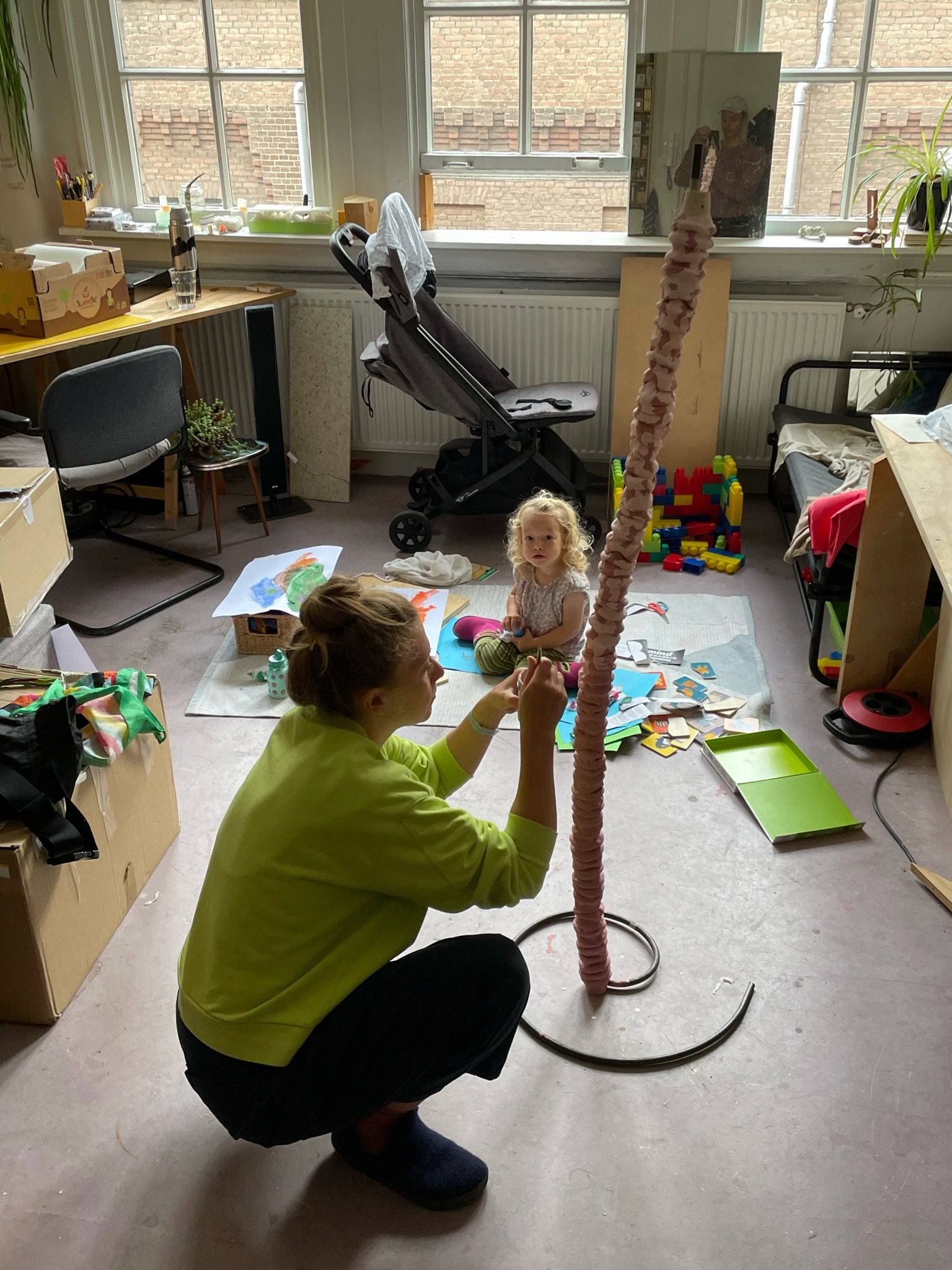
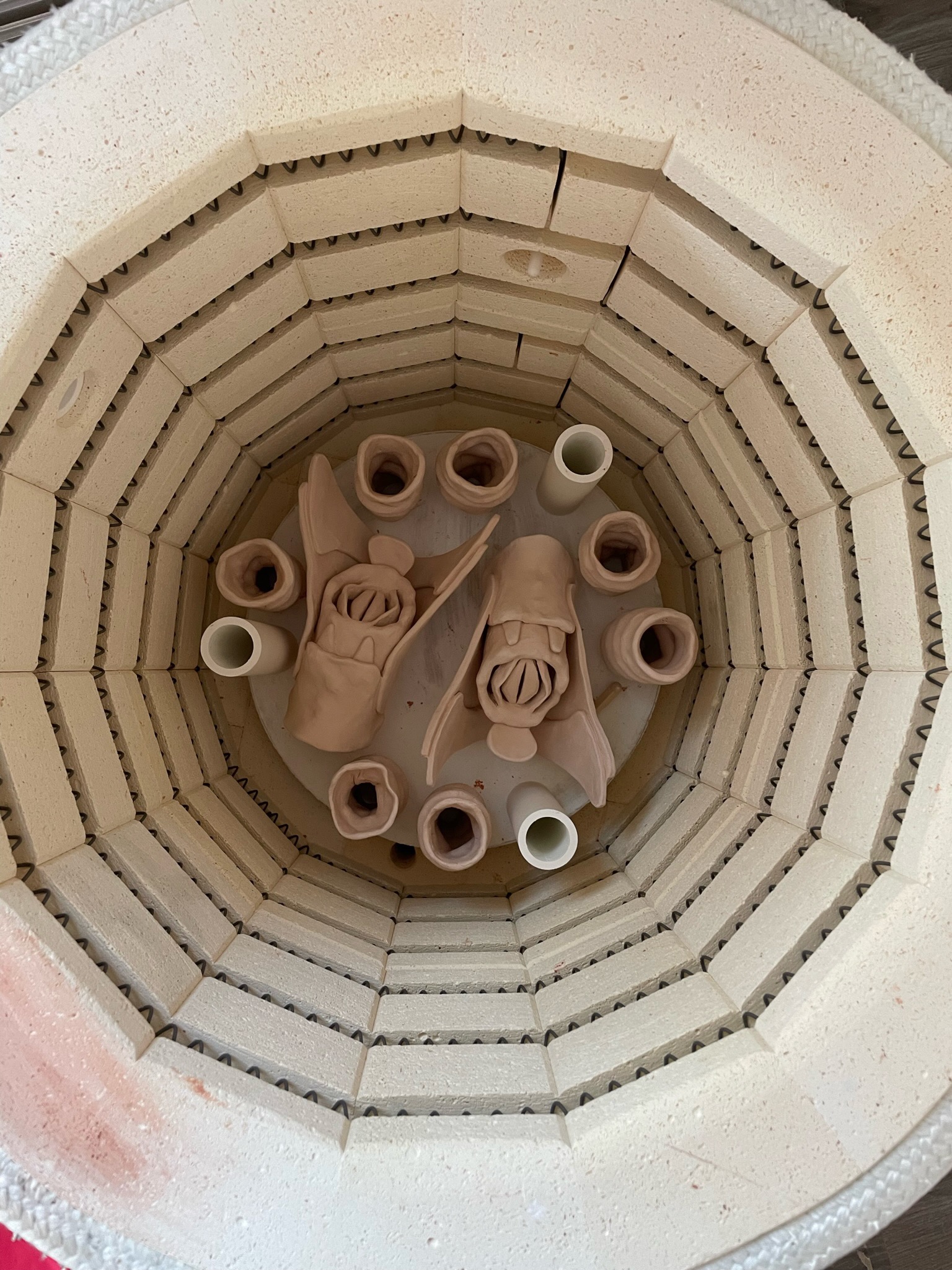
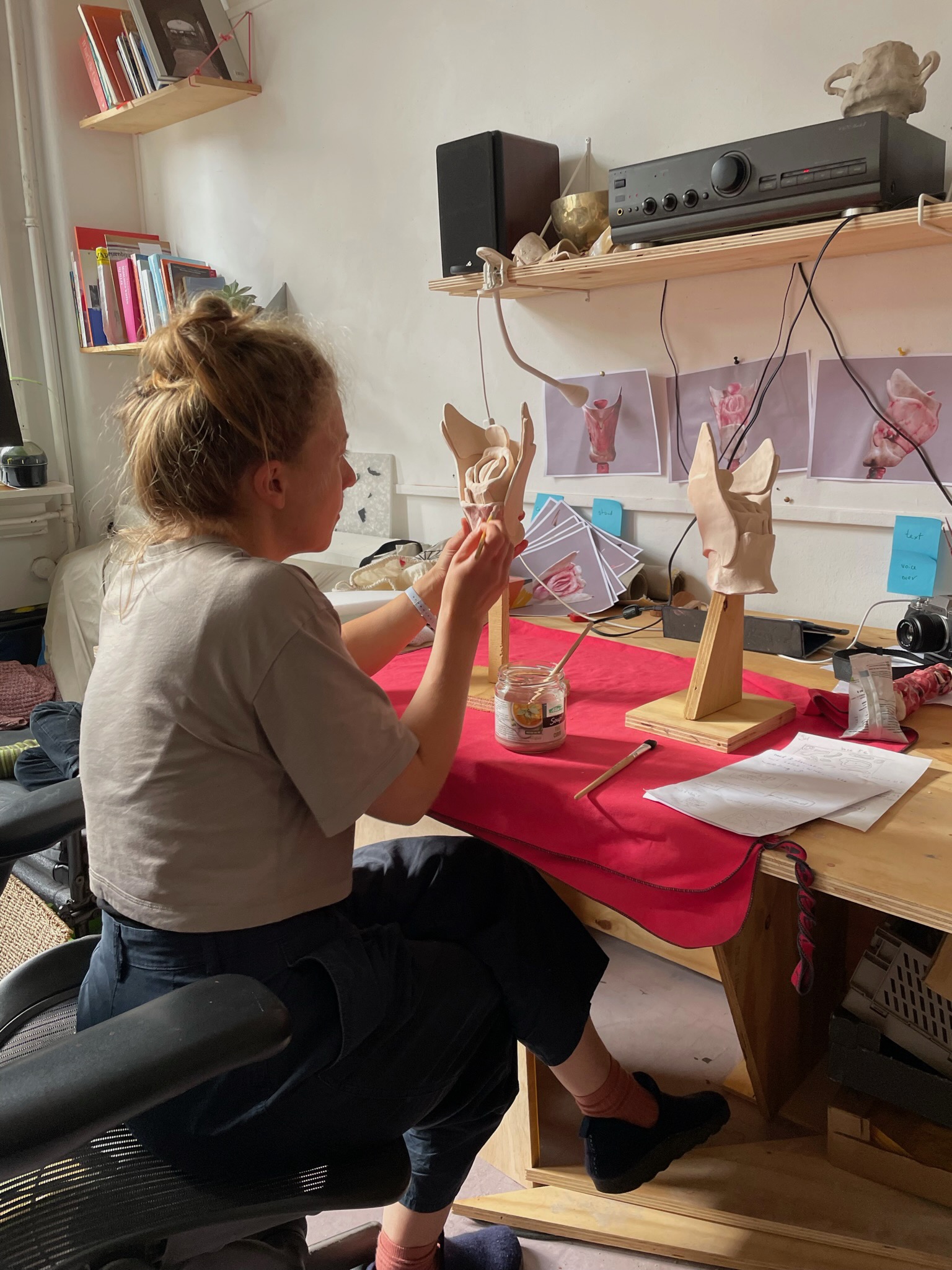
making proces
Trailer made by Florencia Reznik

written extract of the script

close up of the sculpture
Acknowledgements
We owe much to Annabelle Schatteman, who prepared us with the needed materials and know-how and guided Natela in her studio at Seelab. Annabelle had named the sculpture speaking vagina, with blushing on her cheeks.
It couldn’t have been possible without the support of Florentijn de Boer, who allowed us to use her super LCD-powered kiln to fire both the bisque and the final piece.
Thanks to Dóra Szilvasi-Léhy for giving us access to the KABK’s metal workshop and Luis Maly, the artist in instructor role, who showed me the tricks of bending a metal bar.
Thanks to Florencia Reznik, making a poetic trailer for the piece.
We owe much to Annabelle Schatteman, who prepared us with the needed materials and know-how and guided Natela in her studio at Seelab. Annabelle had named the sculpture speaking vagina, with blushing on her cheeks.
It couldn’t have been possible without the support of Florentijn de Boer, who allowed us to use her super LCD-powered kiln to fire both the bisque and the final piece.
Thanks to Dóra Szilvasi-Léhy for giving us access to the KABK’s metal workshop and Luis Maly, the artist in instructor role, who showed me the tricks of bending a metal bar.
Thanks to Florencia Reznik, making a poetic trailer for the piece.